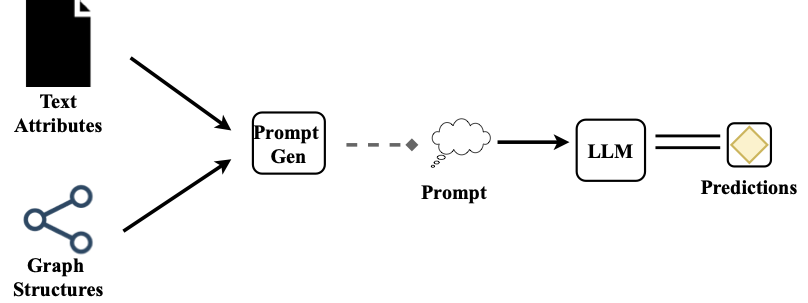Can LLMs Effectively Leverage Graph Structural Information through Prompts, and Why?
Large language models (LLMs) are gaining increasing attention for their capability to process graphs with rich text attributes, especially in a zero-shot fashion. Recent studies demonstrate that LLMs obtain decent text classification performance on common text-rich graph benchmarks, and the performance can be improved by appending encoded structural information as natural languages into prompts. We aim to understand why the incorporation of structural information inherent in graph data can improve the prediction performance of LLMs. First, we rule out the concern of data leakage by curating a novel leakage-free dataset and conducting a comparative analysis alongside a previously widely-used dataset. Second, as past work usually encodes the ego-graph by describing the graph structure in natural language, we ask the question: do LLMs understand the graph structure in accordance with the intent of the prompt designers? Third, we investigate why LLMs can improve their performance after incorporating structural information. Our exploration of these questions reveals that (i) there is no substantial evidence that the performance of LLMs is significantly attributed to data leakage; (ii) instead of understanding prompts as graph structures as intended by the prompt designers, LLMs tend to process prompts more as contextual paragraphs and (iii) the most efficient elements of the local neighborhood included in the prompt are phrases that are pertinent to the node label, rather than the graph structure.
PDF Abstract






 OGB
OGB
 Cora
Cora
